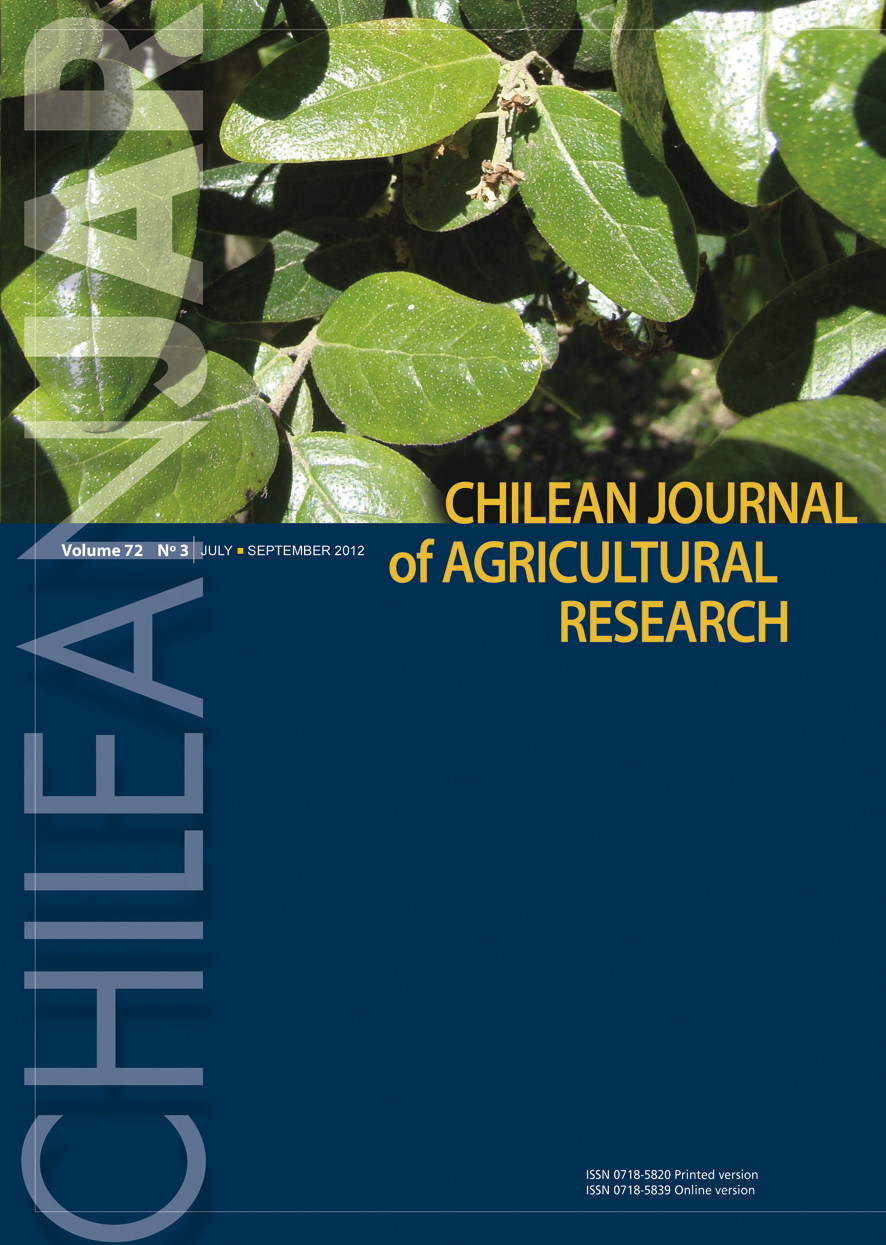
|
Chilean Journal of Agricultural Research
Instituto de Investigaciones Agropecuarias, INIA
ISSN: 0718-5820
EISSN: 0718-5820
Vol. 78, No. 4, 2018, pp. 511-520
|
 Bioline Code: cj18051
Bioline Code: cj18051
Full paper language: English
Document type: Research Article
Document available free of charge
|
|
|
Chilean Journal of Agricultural Research, Vol. 78, No. 4, 2018, pp. 511-520
| en |
Modeling the leaf area of Ormosia paraensis  Ducke by statistical models and artificial neural networks Ducke by statistical models and artificial neural networks
Santos, Ronaldo Oliveira dos; Soares, Rubiene Neto; Pimentel, Mickelly Paula Queiroz; Abreu, Jadson Coelho de; Lima, Robson Borges de & Silva, Breno Marques da Silva e
Abstract
The leaf is a very important plant structure because it allows gas exchange and transformation of light energy into chemical
energy. The objective of this research study was to test artificial neural networks (ANNs) to estimate the leaf area (LA)
of Ormosia paraensis Ducke and compare their performance with adjusted statistical models. One hundred forty leaves
were selected from seedlings of the species at the leaf age of 100 days after sowing (DAT). The LA was calculated by
indirect estimation with ImageJ software, and the linear length (L) and width (W) dimensions were measured with a
ruler graduated in centimeters. Afterward, 90 leaves were randomly separated to generate mathematical equations of
LA (Y) as a function of linear dimensions (L and W), and 50 leaves to validate the equations. Similarly, 100 networks
of the multilayer perceptron (MLP) type were trained with the backpropagation algorithm and the best networks were
selected for later validation. The choice of the best equations and ANNs was based on precision and dispersion statistics.
The quadratic equation obtained from model (4) demonstrated consistent statistics with the coefficient of determination
(R2aj = 87.39) and a low result for the standard error of estimate (SEE = 12.07%). For the ANNs, a correlation coefficient
(Ryŷ), varying between 0.9316 and 0.9521, was obtained in the training phase, while it ranged from 0.8522 to 0.8825 in
the validation phase, generating lower residues. It is concluded that the ANN performance was higher compared with the
conventional regression technique.
Keywords
Adjustment of equations; artificial intelligence; forest species; ImageJ software
|
| |
© Copyright 2018 - Chilean Journal of Agricultural Research
Alternative site location: http://www.inia.cl
|
|
